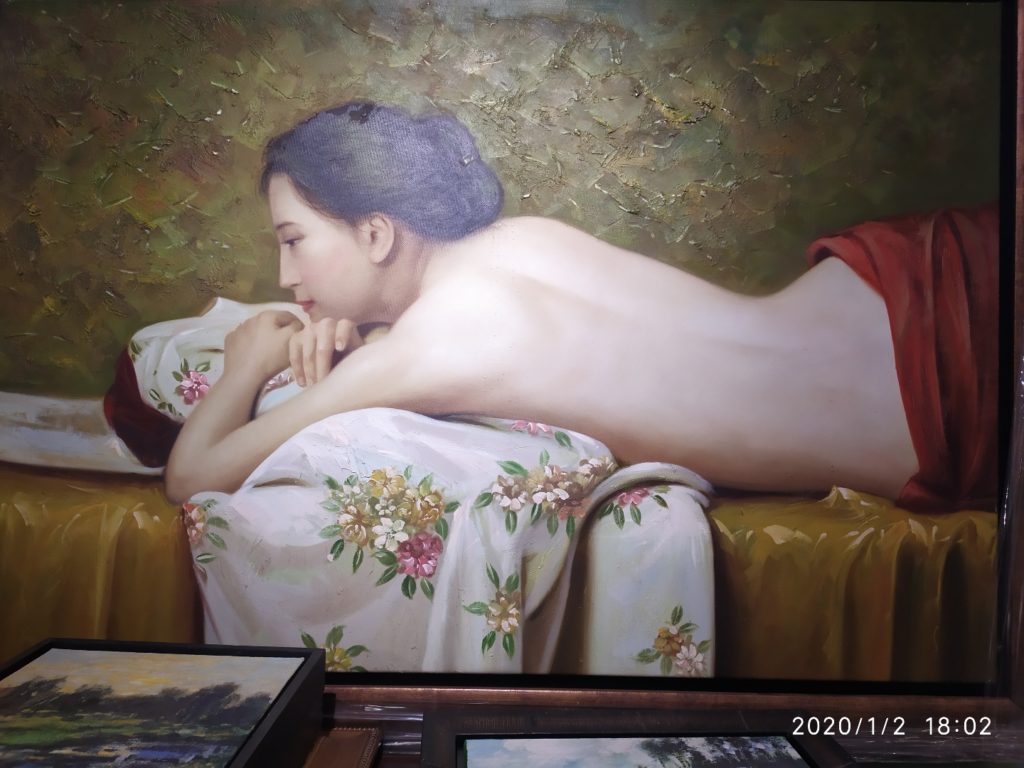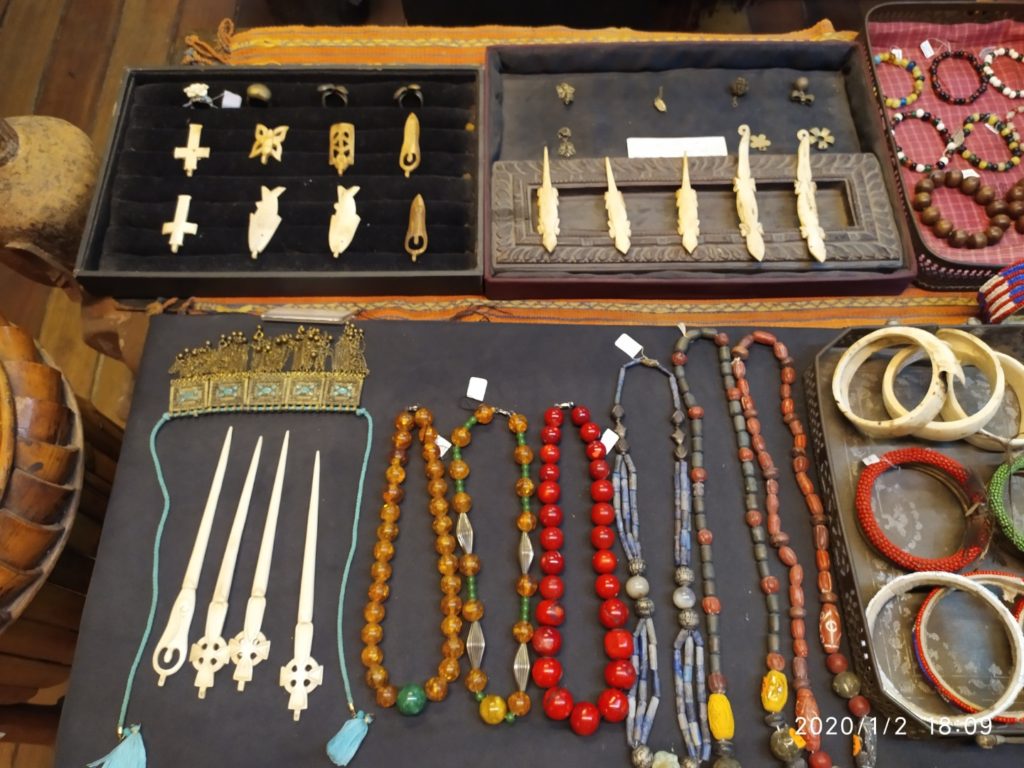Malaysian Borneo Cultural Heritage of Indigenous Tribes. Will children of the forest be able to preserve their tribal culture?
Written and photographed by Cami Ismanova.
One fine, rainy evening, I was walking down the street to visit the local Central Market in Kuala-Lumpur, Malaysia. I was excited to dive into the lively market life and get swirled into the storm of aromas. I knew for sure it was going to be a treat! I entered the market through a back gate and saw rows of fabrics, handmade soap, candles, local jewelry, traditional items of clothing, and souvenir shops.
I was walking from one shop to another when I stumbled into an art shop. I got curious, for I believe art is a major inspiration for someone who enjoys writing. I have no doubt I looked enchanted as I slowly absorbed every single painting I laid an eye on. It was then that I saw the sign “Art House Gallery” up above the first floor. “It wouldn’t hurt to check it out,” I thought, and began my journey into the history of ethnic culture of Malaysian indigenous tribes.
I found out that the Art House Gallery and Museum of Ethnic Arts focuses on the culture and art of the indigenous people of Southeast Asia. This mini museum is the one and only museum dedicated to tribal and ethnic art in the region. The owner, Leonard Yiu, has been collecting and dealing with items of art for 30 years. He offered me a tour around the museum and the gallery, patiently answering dozens of my questions.

Every single time I stopped in front of some painting, tribal mask, or native clothing, he would share an interesting story about each of them. So, if you ever visit this place, you will surely get an amazing guide. As you can judge from its title, the Art House consists both of a gallery and a museum.
The gallery has a great collection of portraits, still lifes, landscapes, and abstract paintings. You are free to purchase whatever you might like. The museum consists of several sections dedicated to the art and culture of the area’s different ethnic groups. In particular, the section on Borneo’s cultural heritage attracted me the most.

Borneo is a gigantic island shared by Malaysia, Indonesia, and Brunei. What makes Borneo so special? To name a few things, it has picturesque views, a biodiverse rainforest, and a rich culture. While I was listening to the stories that Leonardo kindly agreed to share, I saw so many authentic pieces of art from Borneo that it left me speechless.
Native hats, beaded necklaces, woven mats, bone plates, tun-tun sticks, Iban masks, armlets, medicine boxes, carving knives, and many more artifacts were on display. Native beaded hats and necklaces are rich in color and pattern. They reminded me of some Central Asian skullcaps. The woven mats are flamboyant and exquisite, depicting various scenes from the daily life of indigenous tribes. They look both simple and complicated at the same time. All those curved, zigzagged, and wavy lines intersecting and forming a scene certainly tells us a deep, yet easily explicable story.

One of those stories is related to the Iban tribe, a race of fearsome, indigenous warriors known for headhunting and piracy in the past. However, since Europeans came to their lands, the practice of headhunting gradually stopped, although a lot of traditions, tribal customs, and the Iban language are thriving. The Iban tribe mostly inhabits the Malaysian state of Sarawak, although they are found throughout the whole of Borneo. The reason why I remember the Iban tribal culture and art so well is due to the clear image of masks they wore. Iban shamans would wear these (to be honest, quite frightening) masks during tribal rituals. The ancestors of the Iban practiced animism, for they had hundreds of totems and worshiped several groups of beings, including a supreme god, holy spirits, ghost spirits, and the souls of the ancestors.
But nowadays, the majority of the Iban people are Christian. They were converted to Christianity after the mid-19th century arrival of British adventurer James Brooke. Only 13.6 percent of the Iban people still follow their original folk religion of animism, while the rest follow other religions like Islam, or do not have a religion at all. According to Leonard, even though some of the masks are extremely frightening, they were worn by “good guys” known as shamans who tried to heal sick children by practicing various tribal rituals. There is a strong belief that exorcism was a part of those practices.
How do the Iban people live now in the 21st century? Unfortunately, globalization and urbanization are not always welcomed by indigenous people. New construction, deforestation, and wildfires have not contributed to their wellbeing. It has been somewhat difficult for them to accept this modern era of technological advancement and mobility. Some of the Iban people have to move from place to place constantly because of the construction of new buildings in the areas they inhabit. They carry the roofs of their huts to build a new home every two to three months. This kind of life endangers the Iban’s tribal culture, and it is becoming increasingly difficult to preserve what is left.
Once fierce and tattooed warriors who dominated the forest, today they can hardly call their native lands home. It is easier said than done, but I believe that an adaptation to modern life in moderate amounts can save them and their culture from extinction.
I am incredibly happy to share their story and art with others. This world is a home for all of us and the rich, authentic cultures that we have helped to carry on for thousands of years.
THE AUTHOR
Cami Ismanova is a student in Chonnam National University majoring at economics. She loves traveling around, reading classics ,and listening to jazz. These days she is fond of art and architecture, in particular, art galleries and museums. Her favorite art gallery is “The National Gallery of Singapore.”







